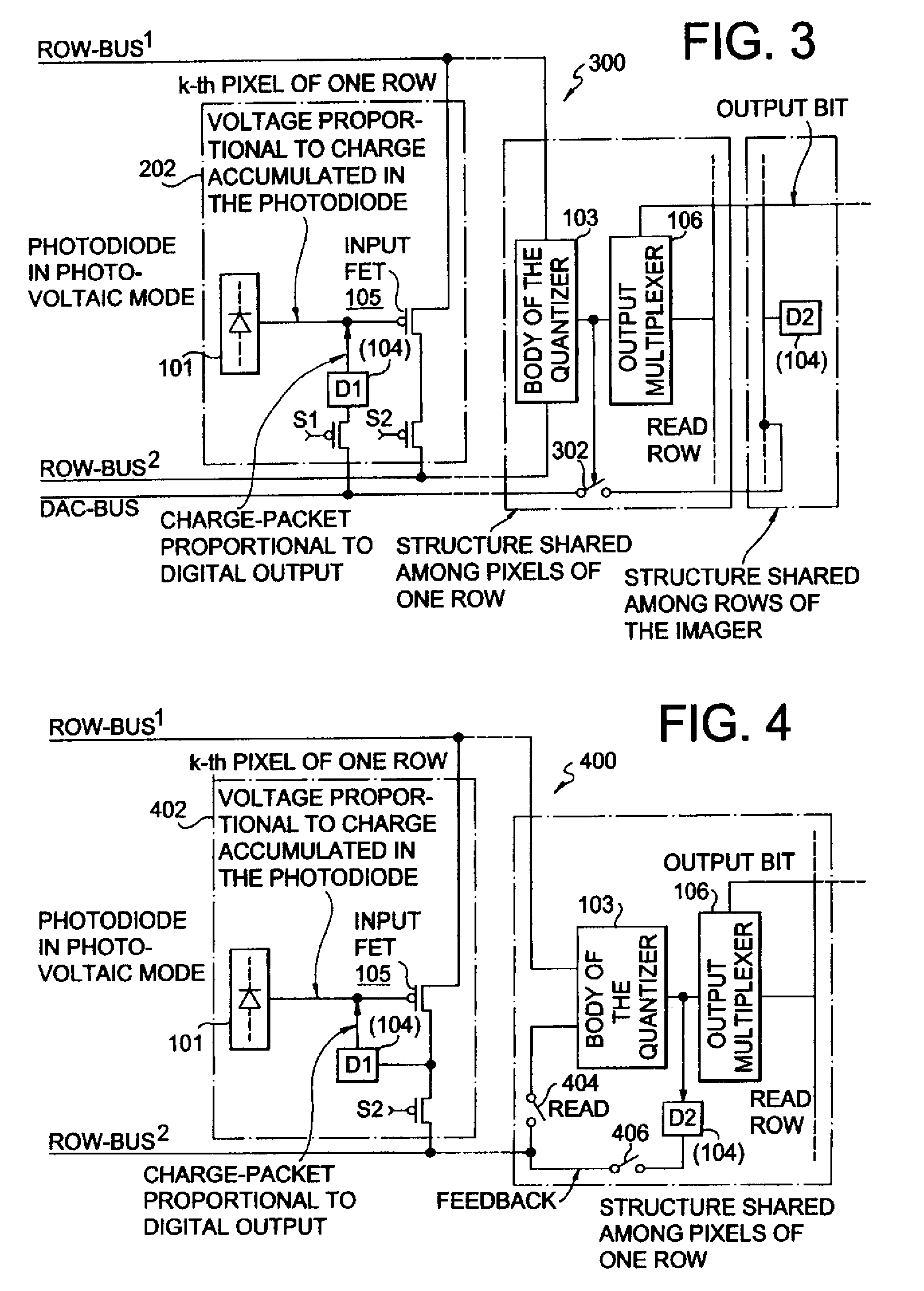Multiplexed-input-separated Sigma-Delta analog-to-digital converter for pixel-level analog-to-digital conversion utilizing a feedback DAC separation
a digital converter and input separation technology, applied in the field of sigma-delta analog-to-digital converters (adc) design, can solve the problems of high power consumption, small format of ccd imagers, and high price, and achieve the effect of low power consumption and high linearity
- Summary
- Abstract
- Description
- Claims
- Application Information
AI Technical Summary
Benefits of technology
Problems solved by technology
Method used
Image
Examples
Embodiment Construction
[0047]Preferred embodiments of the invention will be set forth in detail below with reference to the drawings, in which like reference numerals refer to like elements throughout.
[0048]A block schematic of the known first-order pixel level ΣΔ ADC structure 100, where the integration effect of the photodiode in photo-voltaic mode is used, is shown in FIG. 1. The design shown in FIG. 1 is a fully-parallel design, meaning that each pixel is provided with separate ΣΔ ADC. The block 101 that represents the photosensitive elements contains the photodiode and possibly a biasing circuit to keep the photodiode in the photo-voltaic mode (e.g., a reset switch). While in the photovoltaic mode, the terminals of the photodiode are floating and the photo-generated charge that is built up inside the photo-diode is proportional to light intensity. The terminal voltage of the photodiode is proportional to the charge, and as such it is proportional to the light intensity. In conversion mode, when the Σ...
PUM
 Login to View More
Login to View More Abstract
Description
Claims
Application Information
 Login to View More
Login to View More - R&D
- Intellectual Property
- Life Sciences
- Materials
- Tech Scout
- Unparalleled Data Quality
- Higher Quality Content
- 60% Fewer Hallucinations
Browse by: Latest US Patents, China's latest patents, Technical Efficacy Thesaurus, Application Domain, Technology Topic, Popular Technical Reports.
© 2025 PatSnap. All rights reserved.Legal|Privacy policy|Modern Slavery Act Transparency Statement|Sitemap|About US| Contact US: help@patsnap.com



